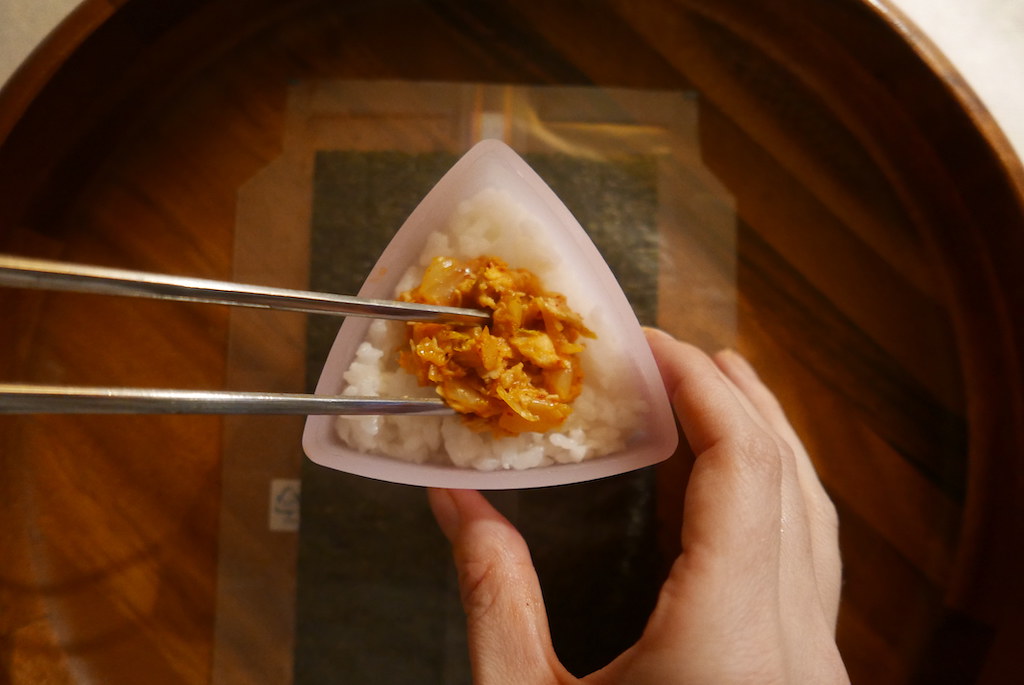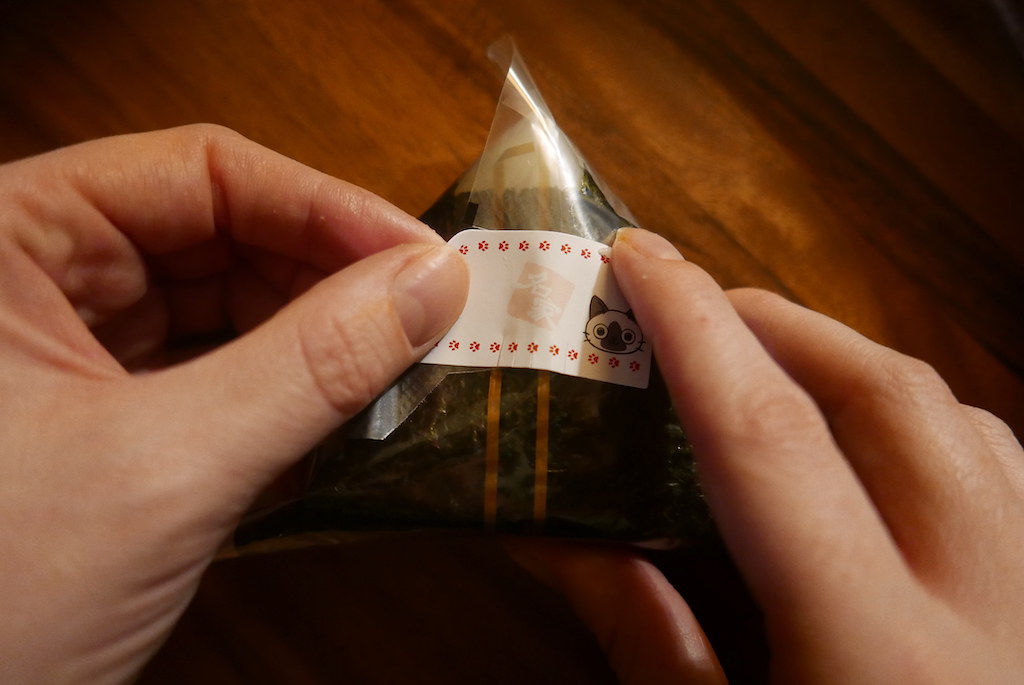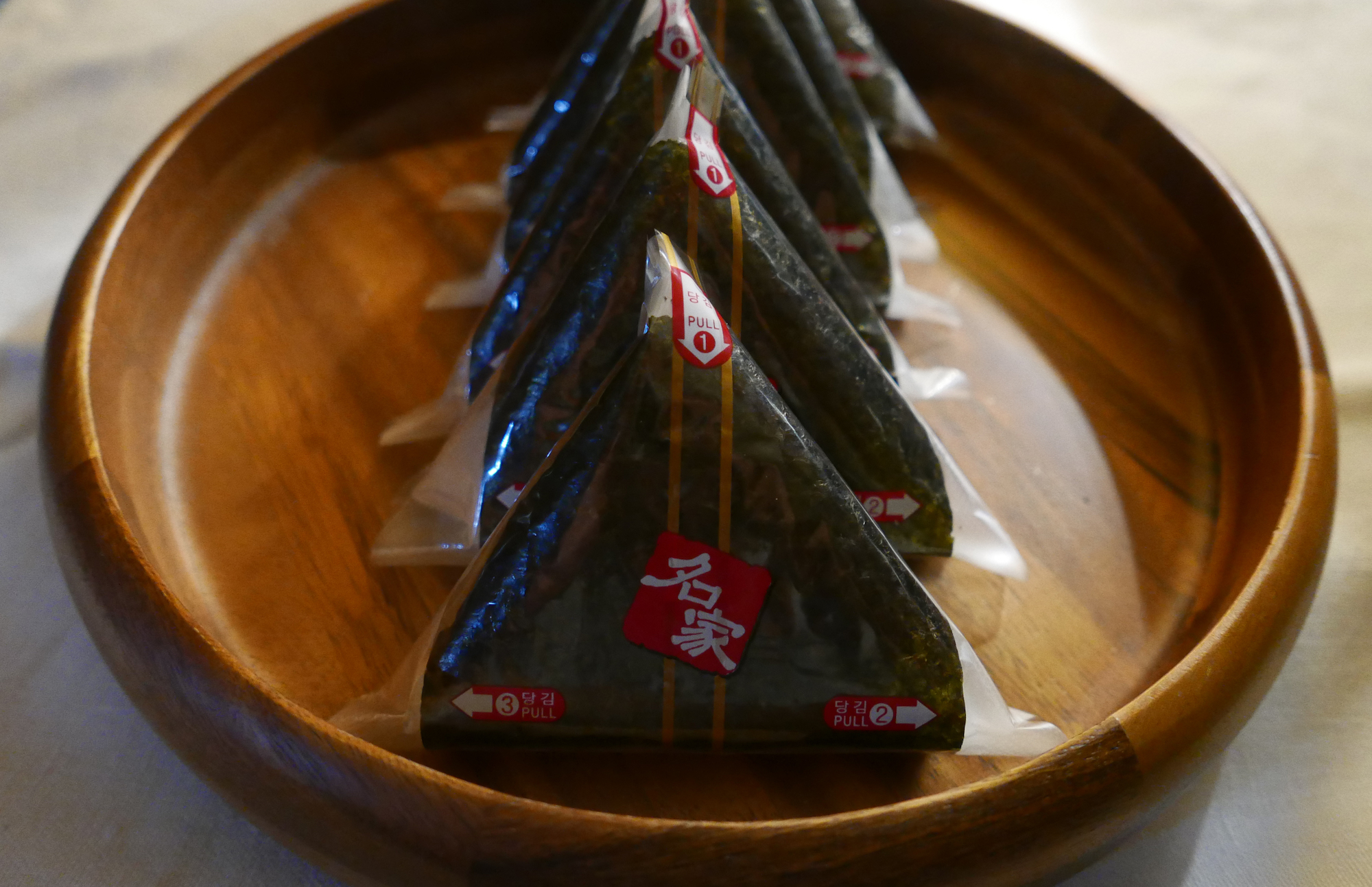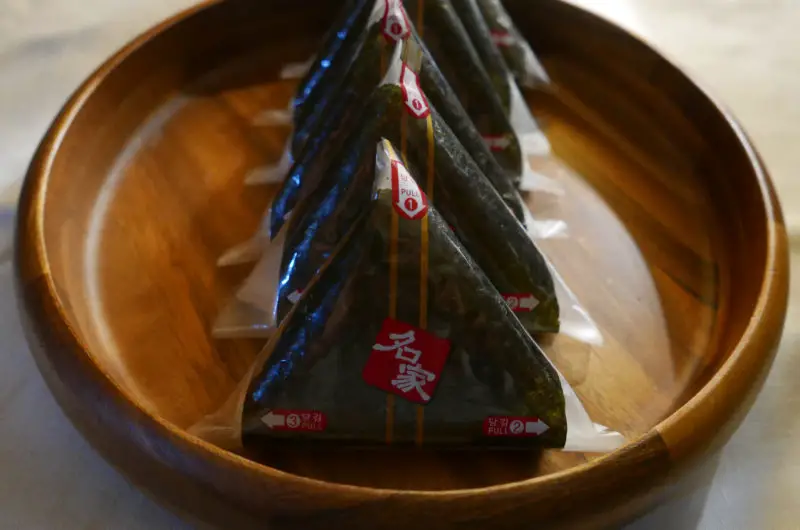When days get overly busy and rushed, I rely on a handful of quick and convenient meals that I know taste good. Examples include different rice bowl recipes or Korean tuna mayo rice. With recipes like these in my back pocket, I know there is always something easy to make at home. Recently, we added another favorite in our household’s quick recipe repertoire: triangle kimbap.
In South Korea, triangle kimbap is a popular quick snack or meal you can buy at convenience stores, or supermarkets; you can also make it at home. So, what exactly is it?
What is Triangle Kimbap?
Kimbap (김밥) is a Korean dish made from dried sheets of seaweed filled with rice, vegetables, and protein. Literally, it means seaweed (kim) rice (bap). While the rolled version is traditional and still very popular, a triangle-shaped version emerged as a convenience food easy to eat with one hand while on a picnic or at your desk.
With the triangle version, the protein, veggies, and sauce fillings fit into the center of rice. Once all the fillings are placed in the center, the rice is then formed into a triangle shape. Next, kim (sheets of dried seaweed) is wrapped around the triangle-shaped rice, protecting your hands from the stickiness of the rice when consumed.
Typically, with convenience store or make-at-home kit versions, there is a protective plastic layer folded between the seaweed and rice. At the same time, there is another plastic layer outside the entire triangle kimbap to keep it safe from the elements and from going rancid in the store’s refrigerated shelves.
How Much Does Triangle Kimbap Cost?
In South Korea, convenience store kimbap often costs less than a dollar! Typically, you can buy different flavors and styles of Korean kimbap for 700 to 900 won (in the USA, that would equal approximately 70 to 90 cents!)

Outside of Hawaii, you can probably only find pre-made versions at Asian grocery stores (such as H-Mart) or a Korean style restaurant in the United States. As a result, prices vary based on availability.
If you want to make these at home, we recommend buying a triangle kimbap kit–you can order different versions on amazon for different prices. We used one as well to make the triangle kimbap recipe we will show you in this post. For reference, Japanese onigiri is typically made solely by hand without a mold, while triangle kimbap is made with a mold.
Below are some of the triangle kimbap kits we recommend! Also, if you already have the mold, you can buy the seaweed separately.
The History of Triangle Kimbap:
To be honest, there are differing accounts and opinions regarding how kimbap came to be in South Korea. Though the traditional rolled kimbap origins are contentious, the triangle version can more easily be traced. Originally, triangle kimbap stemmed from the Japanese dish ‘Onigiri.’ Onigiri first appeared as a ball-shaped form of rice and fillings made to serve and eat quickly during wartime in Japan.
Later on, triangle kimbap first started popping up in South Korea during the 1990s. First, 7-Eleven, a corner convenience store, started selling it. Then, other convenience store brands such as GS25 followed suit. Eventually, triangle kimbap became a staple in the quick-meal Korean diet.
Since its origin, triangle kimbap has expanded in variations and flavor combinations. You can buy flavors such as tuna with mayonnaise, spicy tuna, kimchi, bulgogi, and so on. When making triangle kimbap at home, the flavor combinations are endless. You can add whatever type of filling you are in the mood to eat!
Step-By-Step Guide to Using a Triangle Kimbap Mold
Below, we have step-by-step instructions and pictures on how to use your triangle kimbap mold. We hope this helps you!
Making the Rice Portion of Triangle Kimbap
First, prepare your seaweed by placing it in front of you. The side with numbers should face down with the number one sitting at the top.
Second, place your mold on top of the seaweed. It should sit at the top and on the center of the seaweed sheet.

Third, using your prepared rice, place it into the mold. Fill the mold approximately 1/3 full.

Fourth, place your fillings into the center of the mold. Do not use so much of the ingredients that they burst out the back, front, or sides.

Fifth, top the mold with rice, finally filling it to the top. You should completely cover the fillings underneath.

Sixth, use the top of the mold to press down and secure the rice for the triangle kimbap. You need to tightly pack the rice together. Typically, kimbap molds have an instructional line to try to reach when pressing down. Note: If you cannot reach the line because you added too much rice, do not fret. Instead, just press down until your rice is packed down.

Finally, remove the outside mold from the rice by lifting it upward. Once you remove the exterior mold, take off the top of the mold.

Next, we need to fold the kimbap. We listed the instructions with photos below!!!
Folding the Seaweed for the Kimbap
First, fold the bottom of the seaweed up and around the rice. You are trying to reach the number one marker on the back of the seaweed.

Second, you need to fold the corners of the triangle kimbap. Start with the left side, which has the number two. Then, fold in the right side, which has the number three on the back. Note: Try to tightly fold the seaweed around the rice. At first, you may find this difficult to do as your hands will be doing many things at once. Eventually, after practice, it will become much easier to accomplish.


Finally, while holding everything together, place a sticker over the connecting points. You now have a triangle kimbap!

How to Open Your Triangle Kimbap
Just follow the numbers when opening your triangle kimbap! First, start with the number one. Peel the center strip around the kimbap. You will need to tear through your sticker on the back. Next, you pull the corner labeled number two. The corner should pull off the entire right half of your kimbap. Finally, doing the same thing, pull at the corner labeled number three. Once again, it should pull off the entire other half of plastic.
Once all the plastic is off, you can enjoy eating your triangle kimbap!!!
Adding Your Fillings
When buying triangle kimbap there are so many options you can pick and choose from. You can buy:
- Bulgogi
- Spicy Tuna
- Tuna Mayo
- Fried Kimchi
- Bibimbap
- Cheesy Spicy Chicken
- And More!
We wanted to start with a classic and highly popular version of triangle kimbap: pan-fried kimchi and tuna.
The recipe takes very little time to make. First, prepare equal amounts of canned tuna and kimchi. Then, while heating a pan, chop up the kimchi into small pieces. Next, drain any liquid from the can of tuna. Heat a tablespoon or two of oil on the heated pan. Once the pan and oil are hot, add the tuna and kimchi. Stir fry until the kimchi is caramelized.
Note: If your kimchi is too sour, add a little sugar to the mixture as you stir fry!
Flavoring Your Rice
Koreans usually flavor the rice when making triangle kimbap. Typically, they add a little bit of salt and sesame oil to add fragrance and taste. Otherwise, it can taste a bit bland.
Once the rice is cooked, add a little sesame oil and salt. Then, with a spoon, fluff the rice and mix the added ingredients. While the rice may taste a little salty and strong on its own, it will not when you add the fillings and seaweed.
Have You Ever Tried Triangle Kimbap?
Do you have a favorite version of triangle kimbap? If so, we would love to hear from you! Leave a comment below to tell us your favorite, or send us an email at [email protected]!
If you are interested in further Korean recipes check out our:
- Korean Tuna Mayo Rice
- Romaine Sangchu Geotjeori (Romaine Lettuce Salad)
- Maneul Jangajji (Pickled Garlic)
- Gyeranjjim (Steamed Eggs)
- Korean Barbecue Dipping Sauces
- Doenjang Jjigae (Soybean Paste Stew)
- Ppopgi (Korean Street Cookies)
Finally, we love hearing from you through our social media! You can follow us at @carvingajourney on Instagram, Twitter, Facebook, and Pinterest Also, you can subscribe to our blog by joining our mailing list.
Carving A Journey is a participant in the Amazon Services LLC Associates Program, an affiliate advertising program designed to provide a means for sites to earn advertising fees by advertising and linking to Amazon.com. Although we may earn commissions for our endorsement, recommendation, testimonial, and/or link to any products or services from this website, these opinions are my own and I fully support these products.


